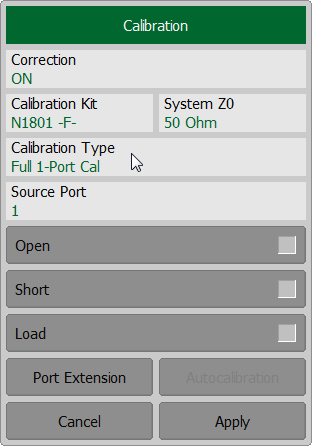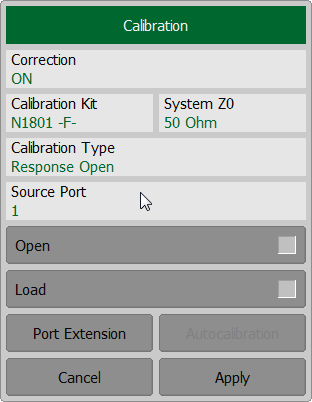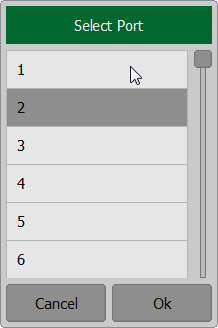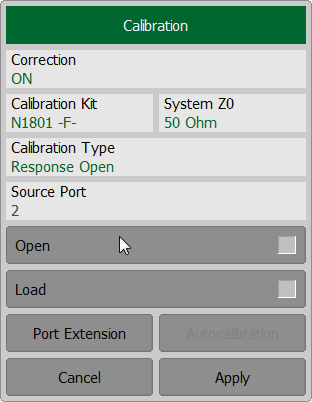Reflection normalization is the simplest calibration method used for reflection coefficient measurements (S11). Measurement of one standard (SHORT or OPEN) is sufficient to perform this type of calibration (See figure below).
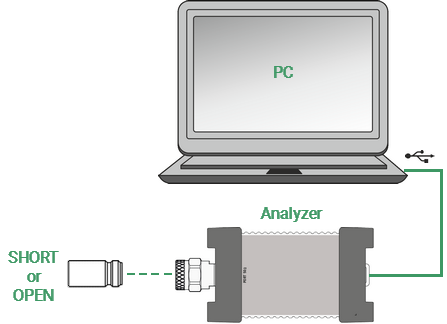
This method is called normalization because the measured S-parameter at each frequency point is divided (normalized) by the corresponding S-parameter of the calibration standard. Reflection normalization corrects the reflection tracking error (Er) only. This constrains the accuracy of the method.
Normalization eliminates frequency-dependent attenuation and phase offset in the measurement circuit but does not compensate errors of directivity and mismatch.
note |
Reflection normalization can also be referred to as response open or response short calibration depending on the standard being used: OPEN or SHORT. |
Before starting calibration perform the following settings: select active channel, set the parameters of the channel (frequency range, IF bandwidth, etc.), and select the calibration kit.
Reflection Normalization for 1-port VNA
To perform reflection normalization, use the following softkey Calibration in the left menu bar. Connect an OPEN or a SHORT standard to the test port as shown in above. Perform measurement using Open or Short softkey respectively. |
|
During the measurement, a pop-up window will appear in the channel window. It will have Calibration label and will indicate the progress of the measurement. On completion of the measurement, the left part of the Open or Short softkey will be color highlighted.
To complete the calibration procedure, click Apply softkey. This will activate the process of calibration coefficient table calculation and saving it into the memory. To clear the measurement results of the standards, click Cancel softkey. This softkey does not cancel the current calibration. To disable the current calibration, turn off the error correction function (See Error Correction Disabling). |
Reflection Normalization for RNVNA
To perform reflection normalization, use the softkey Calibration in the left menu bar. Then click on the Calibration Type field. In the dialog Calibration Type select Response Short or Response Open. Complete the setting by clicking Ok. |
|
In the dialog Calibration assign a signal source port, click on the Source Port field. Then select port in the dialog Select Port.
Connect an OPEN or a SHORT standard to the test port as shown in figure above. Perform measurement using Open or Short softkey respectively.
During the measurement, a pop-up window will appear in the channel window. It will have Calibration label and will indicate the progress of the measurement. On completion of the measurement, the left part of the Open or Short softkey will be color highlighted. To complete the calibration procedure, click Apply softkey. This will activate the process of calibration coefficient table calculation and saving it into the memory. To clear the measurement results of the standards, click Cancel softkey. This softkey does not cancel the current calibration. To disable the current calibration, turn off the error correction function (See Error Correction Disabling). |
note |
The calibration status can be checked in the channel status bar (See General error correction status table) or in the trace status field (See Trace error correction status table). |




